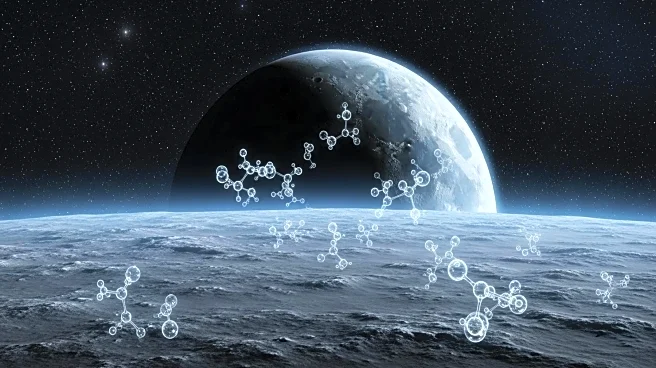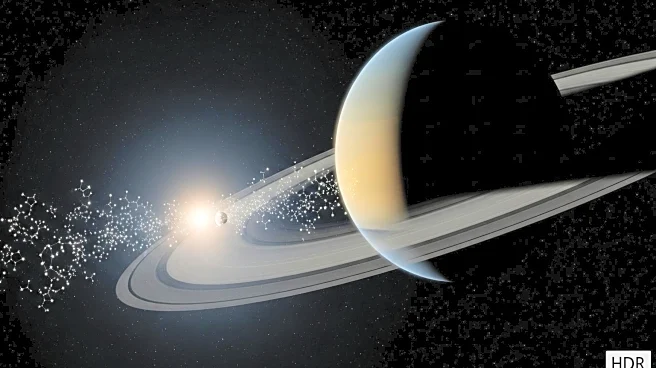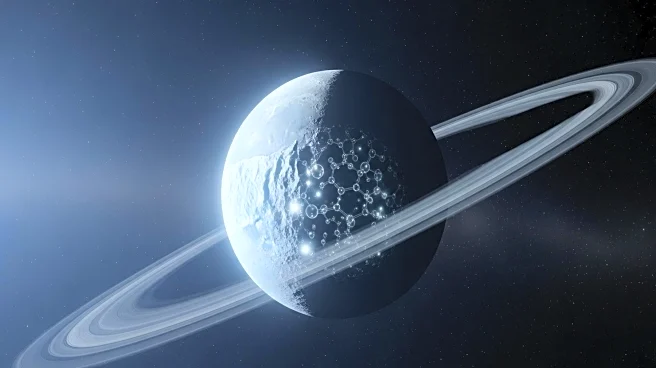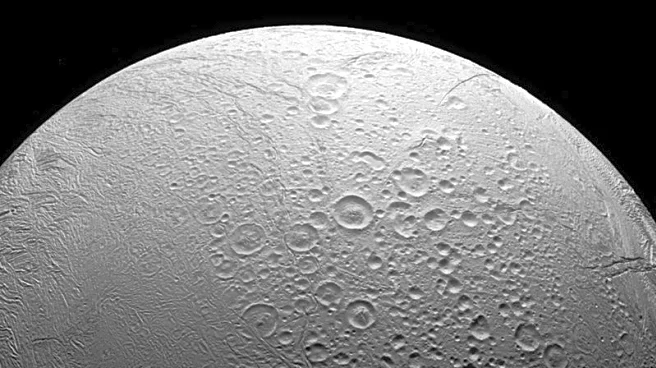What's Happening?
NASA's Cassini spacecraft has uncovered complex organic molecules in the geysers of Saturn's moon Enceladus, suggesting the presence of life's building blocks. These findings, derived from archived data, highlight Enceladus as a point of astrobiological interest. The plumes, first sampled in 2005, originate from a subsurface ocean beneath the moon's icy surface. While some material returns to Enceladus, most escapes into space, forming Saturn's E-ring. The discovery of organic molecules strengthens the hypothesis that Enceladus could harbor conditions suitable for life. However, there is caution due to potential chemical reactions caused by Saturn's magnetosphere, which could alter the molecules.
Why It's Important?
The discovery of organic molecules on Enceladus is significant for astrobiology, as it suggests the moon may have the necessary conditions for life. This finding could influence future space exploration missions, particularly those focused on searching for extraterrestrial life. The presence of organic molecules in the plumes, which are believed to originate from the moon's ocean, supports the idea that Enceladus could be habitable. This has implications for understanding the potential for life beyond Earth and could drive scientific interest and funding towards missions targeting Enceladus and similar celestial bodies.
What's Next?
The European Space Agency is considering a mission to Enceladus, potentially featuring an orbiter and lander, to arrive in 2054. This mission aims to directly sample the moon's ice and confirm the presence of complex chemistry conducive to life. Such a mission would provide ground truth and help resolve uncertainties about the origin of the organic molecules. Continued analysis of Cassini's data and future missions could further illuminate Enceladus's potential for life and inform broader astrobiological research.
Beyond the Headlines
The discovery raises ethical and scientific questions about the search for life beyond Earth. It challenges our understanding of life's potential habitats and the processes that could lead to its emergence. The findings could shift scientific paradigms regarding the conditions necessary for life and prompt discussions about the implications of discovering extraterrestrial life.











